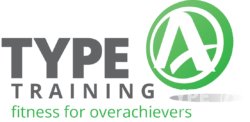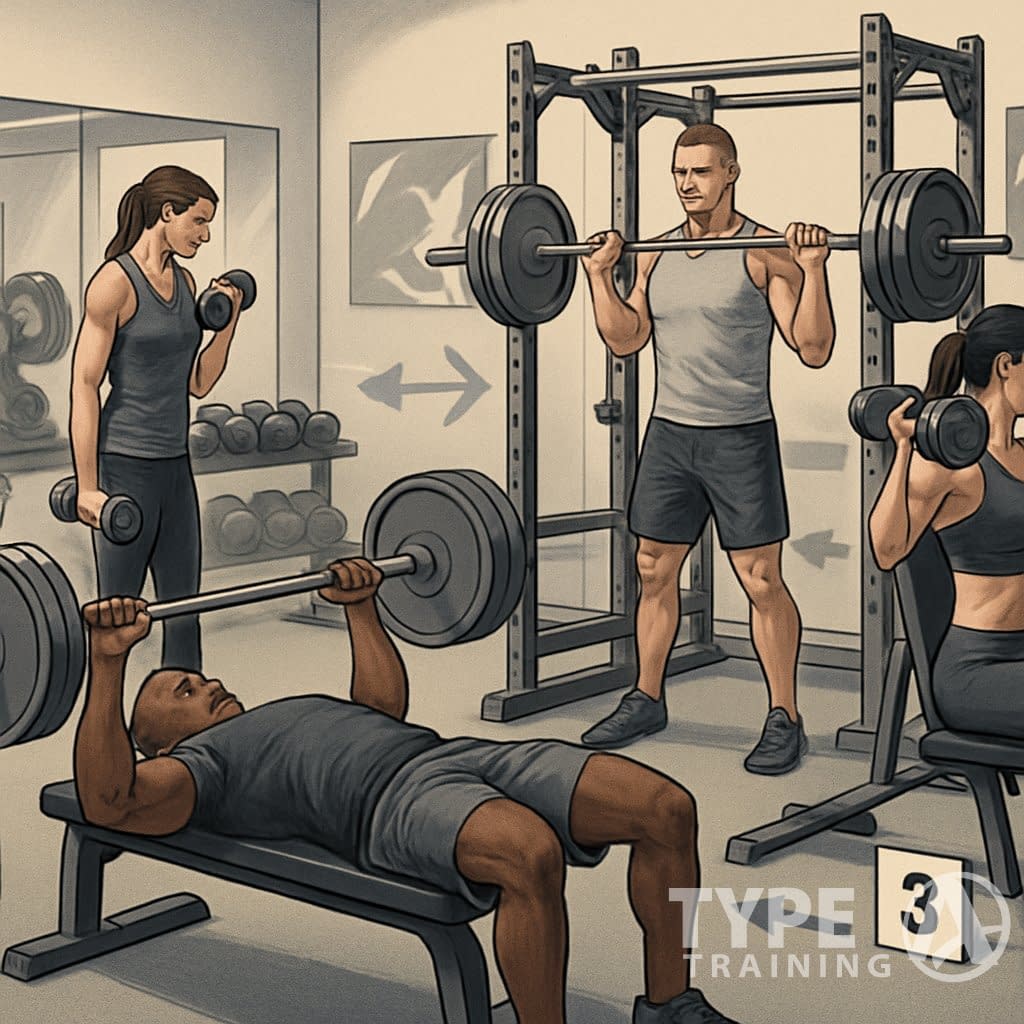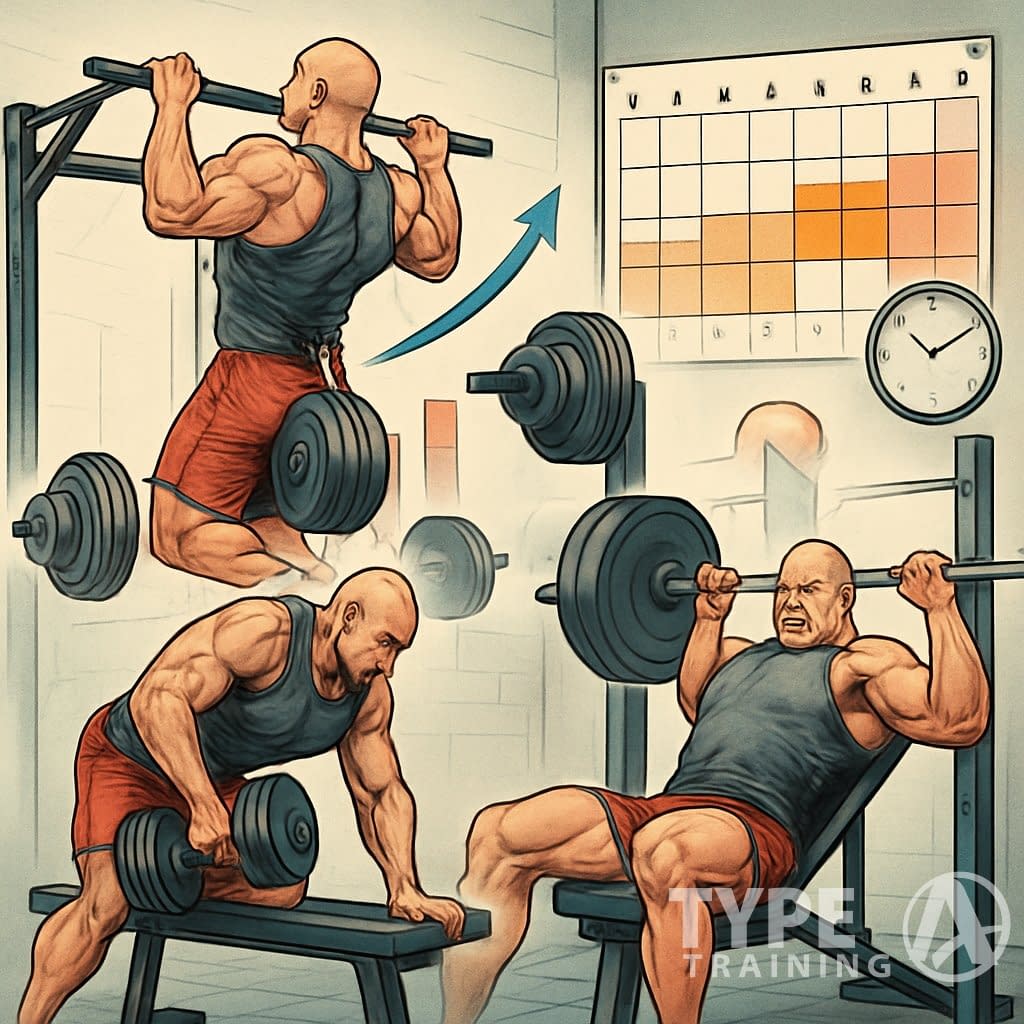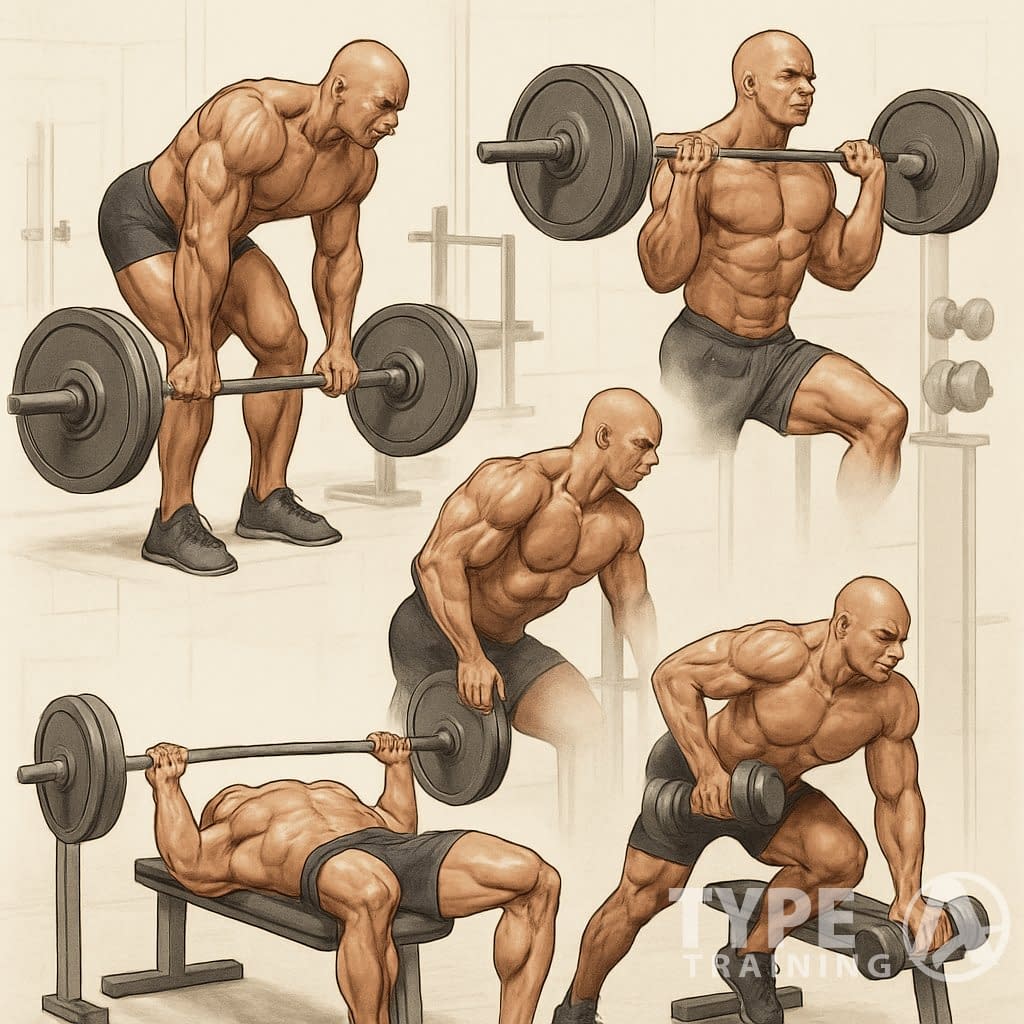Looking for a training method that actually packs on muscle? DC Training, or Doggcrapp, is one of those underground approaches that gets results but often leaves people scratching their heads.
Created by Dante Trudel, this system brings together intense training techniques and smart rest periods to push hypertrophy as far as possible.
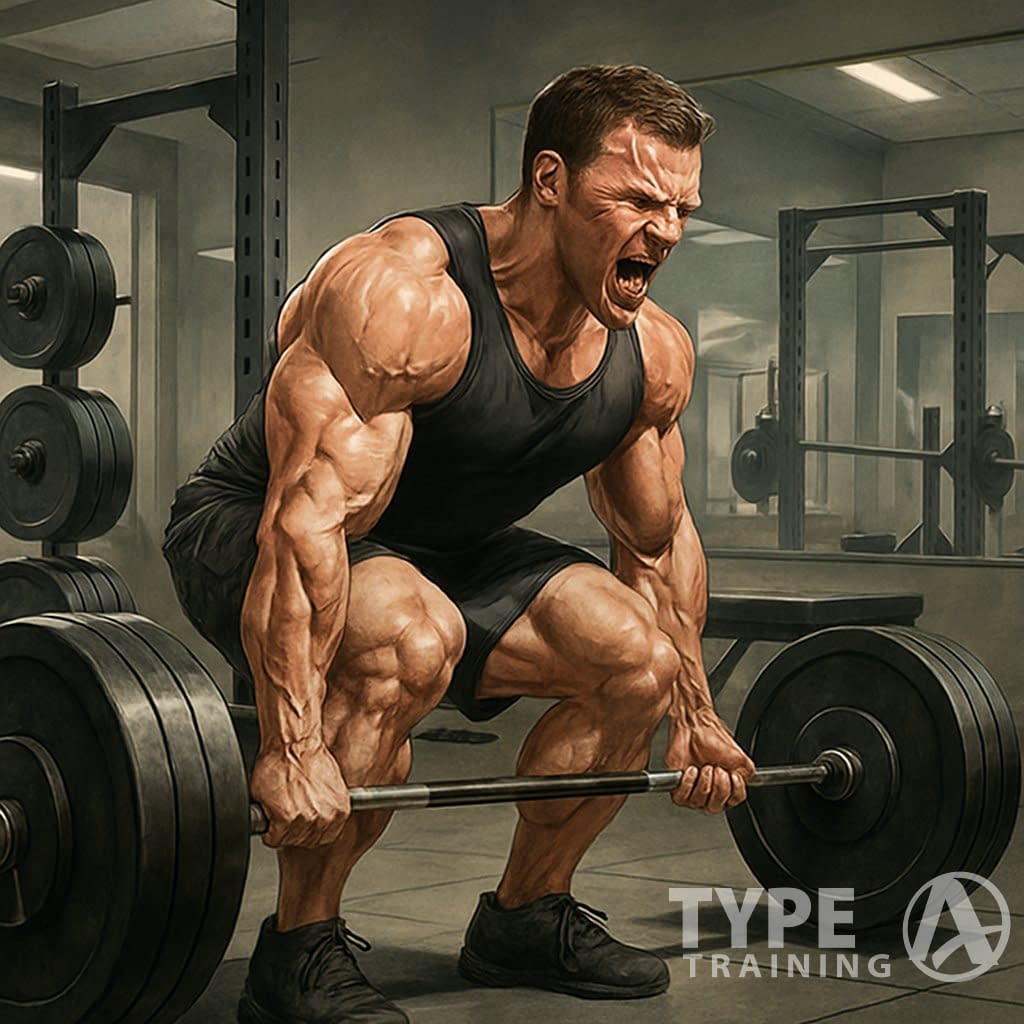
DC Training leans hard on progressive overload, extreme stretching, and rest-pause sets to drive muscle growth beyond what you usually see in typical bodybuilding routines. The name might sound odd (even Trudel admits it wasn’t his best branding move), but folks just call it “DC” and enjoy how it shakes up the usual bodybuilding scene (it’s a bit rebellious, honestly).
Popular posts:
The program uses a clear structure: an A/B split, three times a week, with mandatory rest days between sessions. You’ll end up training each muscle group about twice every 8 days, which feels just right for pushing intensity but not frying your recovery.
Key Takeaways
- DC Training relies on rest-pause sets, progressive overload, and extreme stretching for maximum muscle growth.
- You’ll hit a 3-day weekly split, always keeping rest days between workouts for recovery.
- The system balances high-intensity failure training and frequency, which keeps your gains coming.
What Is DC Training (Doggcrapp)?

DC Training, or Doggcrapp, is a high-intensity bodybuilding approach built for fast muscle and strength gains. The method uses techniques that push your muscles to the edge, but always with enough recovery.
Origins and Development
Dante Trudel came up with DC Training in the early ‘90s. He spent years tweaking and testing methods to break his own plateaus.
The quirky name “Doggcrapp” actually came from his old forum username, back when he first started sharing the system online.
Trudel felt frustrated with slow progress from regular training. He was convinced that most bodybuilders just weren’t pushing hard enough for real growth.
As word spread in the early 2000s, more lifters credited Doggcrapp training for their dramatic transformations. By now, DC Training has a loyal following of serious lifters who want tried-and-true results.
Fundamental Principles
The DC system revolves around three big ideas: heavy progressive loading, rest-pause training, and extreme stretching. You’ll always try to lift the heaviest weights you can for your main sets.
Rest-pause is the centerpiece. Here’s what you do:
- Go to failure on a set
- Rest 15-30 seconds
- Squeeze out more reps with the same weight
- Repeat for three mini-sets total
You’ll only use 1-2 exercises per muscle group, but you go all-in on intensity. This combo of mechanical tension and metabolic stress? That’s the magic for hypertrophy.
DC Training uses a rotating split, so you cover your whole body in three workouts and hit each muscle about twice every 5-8 days. Extreme stretching after each lift is a must—supposedly it boosts recovery and growth.
Core Methodology of Doggcrapp Training
Doggcrapp training is all about specific tools for muscle growth and strength. It’s not about doing more—it’s about going harder.
Rest-Pause Sets
Rest-pause sets are the backbone of Doggcrapp training. You hit failure, pause for 10-15 seconds, and then grind out more reps.
Here’s how it usually goes:
- Pick a weight you can do for 7-10 reps
- Hit failure
- Rest 10-15 seconds
- Get 2-4 more reps
- Rest again for 10-15 seconds
- Squeeze out a final 1-3 reps
This style lets you push past normal limits. Your muscles get a ton of stimulation, way more than with standard sets.
You won’t use rest-pause for everything. Big lifts like deadlifts, squats, and rows usually stay as straight sets to avoid burning out or getting hurt.
Extreme Stretching
After each exercise, DC training has you perform an extreme stretch for the muscle you just trained. These aren’t casual—think heavy, weighted stretches held for 60-90 seconds.
Why bother? Three reasons:
- Stretch the muscle fascia to make space for growth
- Boost blood flow
- Speed up recovery
For chest, you might hold a heavy dumbbell fly at the bottom. For shoulders, maybe a pec deck with your arms back. It’s rough, but apparently essential for DC.
Do the stretches right after your sets, while your muscle’s still pumped. That’s supposed to make them work better for growth.
Heavy Progressive Weights
Progressive overload is the heart of DC training. You always try to add weight or reps every session.
Your logbook becomes your best friend. Write down:
- The exercise
- The weight
- Total reps across all rest-pause segments
- Any notes on form or how it felt
When you hit the rep goal (often 20-30 total across the rest-pause set), bump up the weight next time. This constant push is what drives growth.
DC training also rotates exercises for each muscle group to keep things fresh. Maybe you do incline bench press one workout, flat dumbbell press the next.
Program Structure and Exercise Rotation
DC Training uses a structure that lets you hit every muscle group twice in eight days. It’s all about heavy progressive overload, but with enough frequency to keep growth steady.
Muscle Group Splits
The DC split divides your training into three sessions on a rotating schedule. You train three days a week, always resting between workouts.
Workout A usually covers chest, shoulders, triceps, back width, and back thickness. Workout B hits biceps, forearms, calves, hamstrings, and quads.
You’ll cycle through A1, B1, A2, B2, always taking rest days in between.
This setup gives you solid recovery but keeps the training frequency high enough to matter. Each muscle gets hammered, then gets 4-5 days off before the next round.
Exercise Selection
To make DC Training work, you pick three different exercises for each muscle group. You’ll rotate through these during your cycles.
Say, for chest: incline press, flat press, and dips. For back width: pull-ups, pulldowns, and maybe another vertical pull. For back thickness: rows, deadlifts, and another row variation.
This exercise rotation keeps your body guessing. Each session, you do one exercise per body part, cycling through all three over six workouts.
Choose moves that let you load up the weight and stay safe. Compounds are best for most muscles, but you’ll want some isolation for arms.
Training Frequency and Recovery Process
DC Training stands out for how often you hit each muscle group. The system mixes intense sessions with real recovery to get the most out of your body.
Higher Frequency Approach
DC Training uses more frequency than the classic bodybuilding splits. You’ll train each body part about three times every two weeks, which gives your muscles more chances to grow.
The usual DC split goes like this:
- Workout A: Chest, shoulders, triceps, back width, back thickness
- Workout B: Biceps, forearms, calves, hamstrings, quads
- Workout C: Rest day
Repeat the cycle, training 3-4 days per week, with rest days spaced out. This higher frequency means more muscle stimulation, but you still get enough downtime.
Optimizing Recovery
Recovery matters just as much as the lifting in DC Training. You’re often taking sets to failure, so you need to prioritize rest.
DC Training puts the spotlight on:
- Rest days between sessions
- Rotating exercises to avoid overuse injuries
- Upping your protein to help muscles repair
- Quality sleep—no excuses there
You should train as often as your recovery allows. Listen to your body and tweak your schedule if you’re feeling run down.
Some advanced lifters might need longer breaks because these workouts are brutal.
Instead of piling on volume, DC Training keeps it moderate but ramps up intensity and frequency. That way, you get a strong growth stimulus without burning out.
Progression and Periodization
DC Training takes a different path with progression and periodization. You alternate between intense training phases and recovery periods to keep muscle development moving forward while avoiding burnout.
Tracking Strength Gains
DC Training demands careful tracking of your lifts. You need to beat your last workout, even if it’s just one more rep or a tiny bump in weight. That’s “beating the logbook.”
Rest-pause sets drive this progression. You’ll log three failure points: your first set to failure, a second after a 15-second breather, and a third after another short rest.
Say you hit 11-7-5 reps with 225 pounds on incline bench last time. Next session, you’re aiming for 12-7-6, or maybe upping the weight to 230.
If you stall on an exercise for three to five sessions, swap it out for a new movement. This prevents stagnation and keeps growth ongoing.
Growth Response and Phases
DC Training runs on a “blasting and cruising” cycle. You’ll blast for 6-12 weeks with high-intensity training, then take a 10-14 day cruise with lower volume.
During the blast, you chase progressive overload on every lift. The body gets tired, but the growth stimulus is huge.
The cruise phase is for recovery. You cut volume by about half and dial back intensity. Overdoing it isn’t the goal here.
After cruising, you jump into a new blast with fresh exercise selections. This strategic periodization approach keeps progress rolling by giving your body new challenges and time to recover.
Muscle Growth and Hypertrophy Techniques
DC Training uses some pretty unconventional tactics to trigger muscle growth. The focus is always on intensity and recovery to get the most out of every session.
Hypertrophy Maximization
DC Training flips the script on classic routines. Forget the old “bro split” where you hit each muscle once a week. DC training encourages higher frequency, and research backs up that this speeds up gains.
Extreme stretching comes right after working a muscle group. It’s uncomfortable, but it causes micro-tears that signal the body to grow back stronger.
Rest-pause training is the heart of DC’s approach. You go to failure, rest 15-30 seconds, then squeeze out more reps. This keeps the muscle under tension and wakes up more fibers than standard sets.
Progressive overload is non-negotiable. If you’re not improving, you’re not growing.
Training for Muscle Mass
Plenty of lifters call DC one of the most effective hypertrophy programs out there. Dante Trudel built it specifically to pack on size, fast.
You work a three-way split so every muscle gets hit about twice a week:
- Chest, shoulders, triceps, back width, back thickness
- Biceps, forearms, calves, hamstrings, quads
- Rest day, then repeat
What’s wild is how little volume you do—just 1-3 exercises per muscle group—but you push each one to the max. High intensity is the name of the game.
According to research, this style boosts your hormones for growth and keeps you from burning out.
Key Movements and Exercise Variations
DC Training picks exercises that hit the most muscle in the fewest moves. Compound lifts are the backbone, but there are clever tweaks to make sure you hit every angle and keep progressing.
Leg Press and Stances
Leg press is huge for quad growth in DC Training. You’ll change up your foot position to hit different parts of your legs:
- High foot placement: More glutes and hamstrings
- Low foot placement: More quads
- Wide stance: Inner quads
- Narrow stance: Outer quad sweep
Unlike the rest of the program, you don’t use rest-pause for leg press. Instead, you do straight sets for quadriceps, aiming for one brutal set of 12-20 reps.
For hamstrings, Romanian deadlifts or seated leg curls are common, and here you’ll often use rest-pause.
Deadlifts and Deadlift Variations
Deadlifts in DC Training are all about building back thickness. You’ll see:
- Rack deadlifts: More weight, less lower back stress
- Conventional deadlifts: Overall back
- Romanian deadlifts: Hamstrings and back
Just like other back thickness exercises, deadlifts are done as straight sets. Usually, it’s one heavy set for 6-12 reps.
Chase progressive overload every time. Keep your form sharp and log every set so you know you’re moving forward.
Calves, Forearms, and Back
Back training splits into width and thickness:
- Back width: Pulldowns or pull-ups with rest-pause
- Back thickness: Straight sets for rows
For calves, you’ll do:
- Standing calf raises (gastrocnemius)
- Seated calf raises (soleus)
The tempo is strict: five seconds at the bottom, explode up, five seconds down. No rest-pause, just straight sets with perfect form.
Forearms get straight sets too. Standard moves are:
- Reverse barbell curls
- Behind-the-back wrist curls
- Hammer curls
These build grip and forearm size—no shortcuts.
Chest Workout Techniques
DC Training hits chest with a few key moves:
- Incline Smith machine press: Heavy hitter
- Flat dumbbell press: Big range of motion
- Decline hammer strength press: Lower chest
- Dips: Chest and triceps
For chest, you use the rest-pause method:
- Go to failure (7-10 reps)
- Breathe for 15-20 seconds
- Another mini-set to failure
- One last time
This puts insane tension on your muscles. Always try to beat your last numbers, whether it’s weight or reps.
Focus on a deep stretch at the bottom and a hard squeeze at the top for the best results.
Nutrition and Supportive Practices
DC Training isn’t just about lifting heavy. Nutrition and recovery matter just as much as the workouts.
Protein Intake for Muscle Growth
You’ll need a lot of protein for DC Training to work. Dante Trudel’s program recommends 1.5-2 grams per pound of bodyweight daily. That’s higher than most plans, but it matches the demands of those brutal sets.
Split your protein across 5-6 meals. Aim for:
- 40-60 grams of quality protein per meal
- Healthy fats in moderation
- Carbs adjusted for your phase
Pre and post-workout nutrition are non-negotiable. Get in fast-digesting proteins like whey isolate after training, plus some carbs to reload your muscles.
Integrating Cardio and Recovery
This program is a grind, so recovery has to be intentional. Use extreme stretching after each muscle group for better growth and mobility.
Keep cardio reasonable:
- 2-3 times a week, 20-30 minutes
- Low-intensity steady state (LISS) works best
- Don’t do it right before lifting
Sleep is huge—7-9 hours a night, no excuses. Other recovery tricks:
- Contrast showers (hot and cold)
- Massage or foam rolling
- Planned deloads every 6-8 weeks
The DC Training system uses “blasting” and “cruising” to keep you from burning out. Blast for 6-8 weeks, cruise for 10-14 days, then hit it again.
Influential Figures and Community Impact
DC Training has left a mark on bodybuilding, thanks to its creator and a loyal crew of lifters. It’s helped plenty of people bust plateaus and totally transform their physiques.
Dante Trudel’s Role
Dante Trudel came up with DC Training (Doggcrapp) in the early 2000s. He built the system through years of trial, error, and watching what really worked for muscle growth.
He first shared DC on forums, using the handle “Doggcrapp”—the name stuck. His style is blunt, results-driven, and hard to argue with.
What’s cool about Trudel is that he’s always improving the method. He tweaks DC Training based on feedback from countless trainees. You can see his fingerprints all over modern bodybuilding chatter.
DC Training Success Stories
A lot of bodybuilders say DC Training changed their physiques and finally helped them smash through stubborn plateaus. Dave Henry, a professional bodybuilder, incorporated DC Training principles during parts of his career and saw real success.
The DC Training community loves to share wild before-and-after shots. People often highlight some pretty jaw-dropping strength gains.
You’ll spot trainees benching 405 pounds for reps on inclines after sticking with the protocol. That’s not something you see every day.
The community aspect of DC Training creates a sense of accountability. There are supportive groups online where folks swap tips, tweak routines, and cheer each other on through those brutal sessions.
